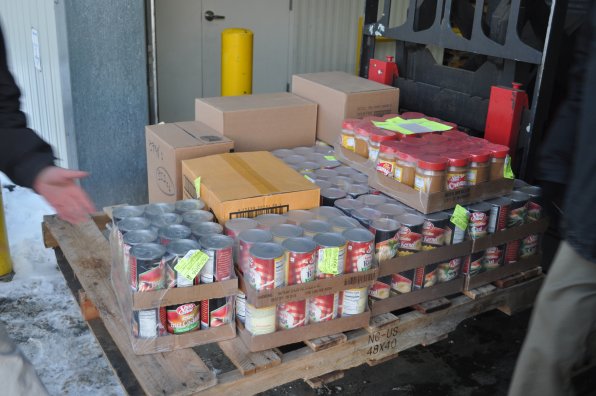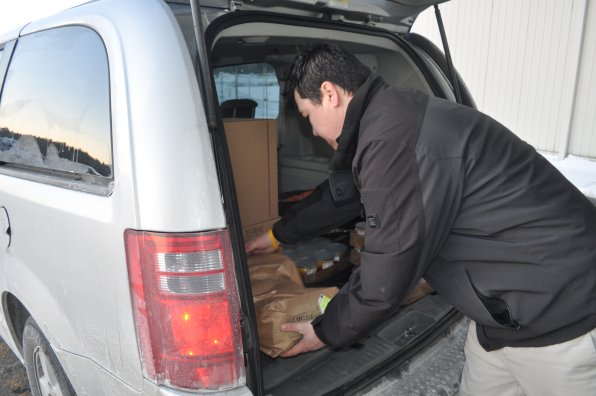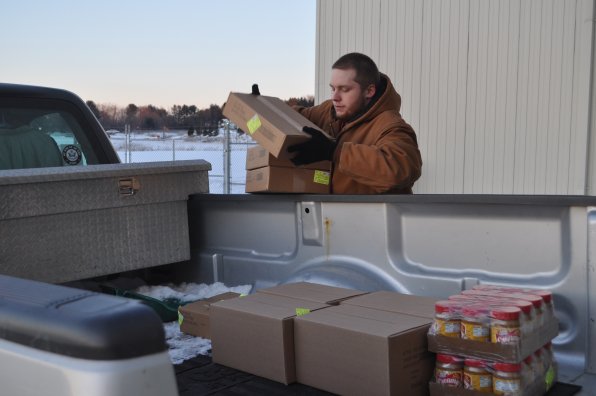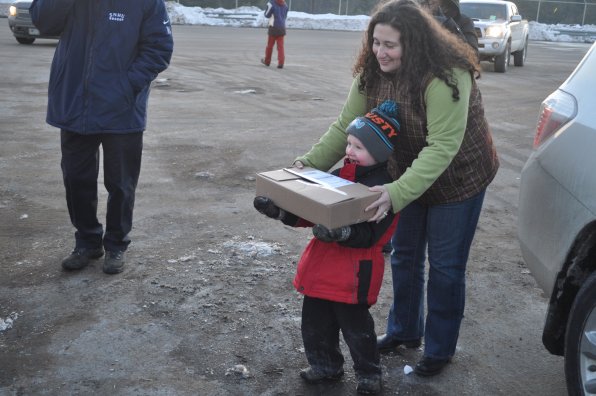It’s been 40 years since Maria Manus Painchaud’s father started the Holiday Food Basket Program.
Mark Manus saw a need to help the capital region’s hungry, so he began collecting food donations to hand out around the holidays. Since that first year in 1974, the holiday program has grown by leaps and bounds, shelling out tons upon tons every year.
But soon the realization came that it wasn’t just around the holidays when there was a need. It was year-round. So by 1982, the Capital Region Food Program was created. While it’s gone through a lot of changes over the years, especially when Manus passed away in 1989, the one constant has always been putting those in need at the forefront.
“Our goal is to eliminate hunger in the greater Concord area,” said Manus Painchaud.
For years, the Capital Region Food Program had helped those in need, no matter what time of year. Yet it wasn’t until 1992, after Manus Painchaud helped guide the program following her father’s passing, that the Year Round Distribution Project became official.
“We were informally doing a year-round distribution,” said Manus Painchaud, chair of the Holiday Food Basket Project.
Fast forward to 2014 and the program is providing non-perishable food items to about 30 agencies in 18 communities in and around the Concord area. And passing out a lot of food each month. We’re talking tons.
“The food is given to them at no cost because it’s bought with donated money,” said Jill Teeters, the program’s marketing and public relations chair.
Unlike the local food pantries, churches and social service branches the program serves, it runs almost strictly off monetary donations. If there’s enough notice, the program will accept non-perishable donations from a food drive, but since they don’t have a facility, there’s not a place to store the products. And it would be awkward to have piles of food stashed all over the city.
“The best way we’re able to support the agencies we serve is through monetary donations,” said Teeters. “A lot of the agencies wouldn’t be able to survive without our help.”
But because there’s not a facility, the program doesn’t have the added expense of rent and the overhead that comes with it, allowing for the donations to go entirely toward purchasing food. Actually 100 percent of the donations are used to help feed the hungry. It’s volunteer-run, and what added costs the program does have are typically covered by specific donations.
“We are making good use of the money,” said Teeters. “Every single dollar is used for purchasing food. When someone gives us a $10 donation, $10 is going to food.”
And the need may be more than you think. The CRFP is only a supplemental program for the agencies, but still manages to distribute an average of two and a half tons of food each month at a cost of around $7,000.
“It’s really been an important and much needed service to the community,” said Manus Painchaud. “Hunger and security aren’t going away. It’s a bigger problem than people are willing to admit.”
For George Webber, the director of the St. Vincent DePaul food pantry at St. Peter’s Church, the Capital Region Food Program is just one of the programs the pantry uses to service its families. With 325 families and a total of 1,200 inpiduals, Webber needs all the food he can get. The pantry purchases food once a week from the New Hampshire Food Bank and also receives assistance from the USDA every other month.
“We try to keep the shelves stocked at the food pantry with the nutritious things that people need,” said Webber. “And we’d spend a lot more money if we didn’t have (the Captial Region Food Program.”
And when it comes to the second Tuesday of each month, Webber is ready for another donation.
“This is important to us. It really is,” said Webber. “We take advantage of it each month.”
So this is how it works for Webber and the other agencies – they must email their order prior to 9 a.m. on the 25th of the month. Each agency can order up to four cases of an item and 20 cases total.
“Every agency is given a year round order form so they know what we provide,” said Manus Painchaud.
It includes the staples; things like tuna, peanut butter and cereal. There are canned fruits and vegetables, pasta and tomato sauce, as well as soups.
After all the lists for that month come in, Manus Painchaud will notify Associated Grocers in Pembroke, where the food is purchased and distributed from, 10 days prior to the pickup date. The orders are then put together and ready when the pickup date arrives.
Last Tuesday, more than two tons of non-perishable food was distributed to 13 local agencies with a total cost of close to $5,300. The hard thing to believe is that’s considered a slow month.
“It can be as few as a dozen agencies or 20 or more,” said Teeters. “It really depends on their needs. On average, it’s somewhere in the $5,000 to $7,000 range.”
Every second Tuesday, the agencies are given a time slot to pick up their cases. It usually takes less than 30 minutes.
“It’s kind of like a well orchestrated dance,” said Teeters.
Manus Painchaud said most agencies order the same things each month, mostly because they can’t get it anywhere else. But in recent years, more residents from outside the United States have moved to the area. Manus Painchaud said there’s been more of a need for long grained rice, beans and lentils.
“We’re paying attention to the trends in the area and getting out the products that are needed,” said Manus Painchaud.
While many think the winter is when families need the most assistance that isn’t necessarily the case. Yes, there’s a need in the cold months when people struggle between buying food and heating their homes, but the summer time can also be challenging. Children are receiving assistance through the schools, but when June rolls around those one to two meals a day are no longer available, putting a further strain on families just barely surviving.
“Summertime is a critical time for the agencies,” said Manus Painchaud.
Yet it’s because of the consistency in the donations that CRFP is able to survive. The annual Postal Food Drive in May and the Scouts for Food in November, which is used in the Holiday Food Basket Project, are two of the major food contributions. That and when kids like 6-year-old Aidan Lamothe and 5-year-old Jacob Littlefield give up their birthday presents and instead ask party goers to bring peanut butter and tuna to donate. You have to admit that’s pretty awesome.
But the program gets its biggest boost from good old money. And now you can make donations with a credit card through the website capitalregionfoodprogram.org.
Every dollar you donate will help in the Capital Region Food Program’s quest to end hunger, Now isn’t that something you want to be a part of.












